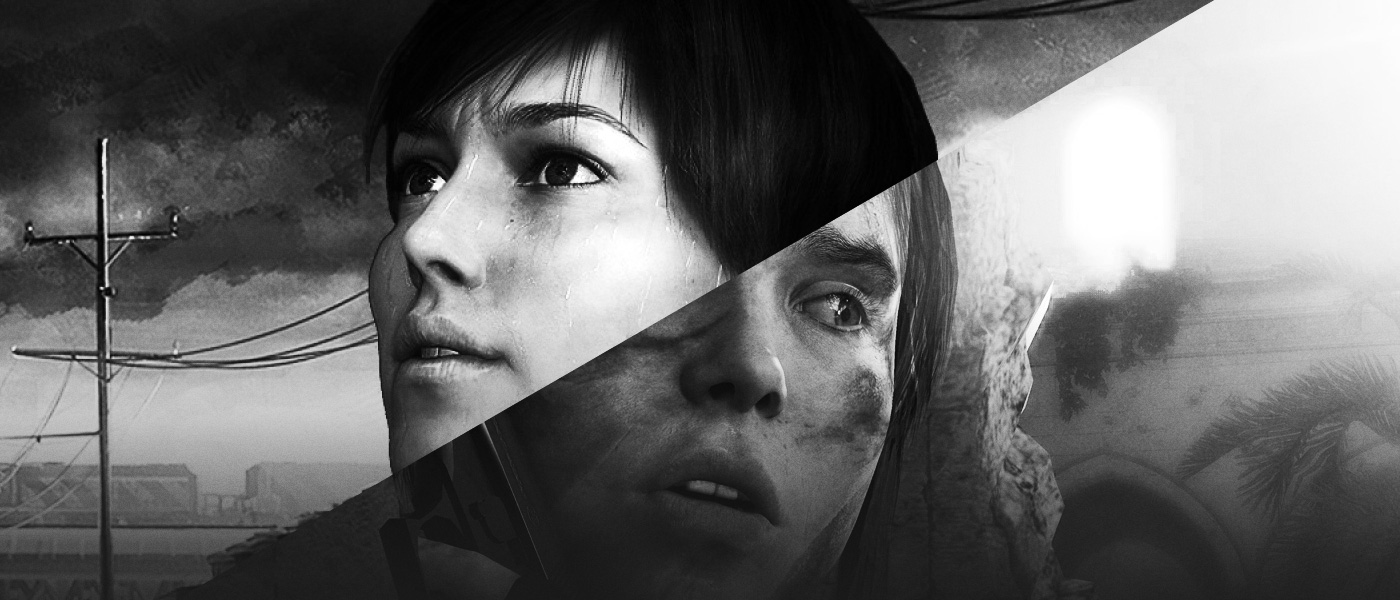Note: Heavy Rain and Beyond: Two Souls are available both separately and as part of the bundled Quantic Dream Collection. Buyers who have purchased Beyond: Two Souls on PlayStation 4 prior to Heavy Rain’s release are able to buy the game at a discounted price. The PS4 version of Heavy Rain and Beyond: Two Souls was primarily tested for the purpose of this review. Considering the fact that we’re handling multiple titles in this case, and the easily spoiled nature of each game, I’d like to stick to a short analysis of each story, starting with Heavy Rain, the oldest of these two titles.
Considering the fact that we’re handling multiple titles in this case, and the easily spoiled nature of each game, I’d like to stick to a short analysis of each story, starting with Heavy Rain, the oldest of these two titles.
Heavy Rain is arguably one of the most impressive titles within the Quantic Dream portfolio, consisting of many great twists and turns that change the story drastically as the mystery unfolds before your eyes. Its strengths lie in its pacing and the plot twists in question, yet the game’s narrative does suffer on a few fronts, including its often awkward style of dialogue, which is amplified by the fact that some of the performances are rather wooden unfortunately. Character development is greatly present, but as noted, the performances are simply an aspect that you’ll have to get through in order to appreciate the greater narrative, which can be rather silly or over-the-top at points, but remains decently consistent throughout. Beyond: Two Souls is a much more divisive title. Unlike its predecessor, Beyond’s narrative is a lot less deep and interesting when it comes to storytelling, which isn’t because it doesn’t have enough to tell, but because Beyond simply has too much to say for its own good. Spreading the story across an out-of-order storytelling mechanic, the game is often simply too confused to know what it ultimately wants to do. However, in contrast to Heavy Rain , Beyond is supported by great performances, which despite the hammy dialogue still manage to portray the emotional aspects of each sequence, even if the sequences by themselves are ineffective.
Beyond: Two Souls is a much more divisive title. Unlike its predecessor, Beyond’s narrative is a lot less deep and interesting when it comes to storytelling, which isn’t because it doesn’t have enough to tell, but because Beyond simply has too much to say for its own good. Spreading the story across an out-of-order storytelling mechanic, the game is often simply too confused to know what it ultimately wants to do. However, in contrast to Heavy Rain , Beyond is supported by great performances, which despite the hammy dialogue still manage to portray the emotional aspects of each sequence, even if the sequences by themselves are ineffective.  The games in the Quantic Dream Collection wouldn’t be what you’d call a full remaster, but more of a port to say the least. Each title is presented in 1080p at its original (albeit optimized) framerate, without much (if any) technical updates.
The games in the Quantic Dream Collection wouldn’t be what you’d call a full remaster, but more of a port to say the least. Each title is presented in 1080p at its original (albeit optimized) framerate, without much (if any) technical updates.
Once again starting off with Heavy Rain, the increase in resolution is very apparent from the first moments of the game. Performance and textures are much more clear than they ever were on PlayStation 3, but in exchange for the performance and resolution boost the game does showcase its age when it comes to geometry and animations. Whilst stylistically Heavy Rain is still a well-designed title on a visual front, the visuals haven’t aged quite as gracefully as one would’ve hoped. To be fair, the fact that this is more of a direct port rather than an actual full-fledged remaster does make me give the game some slack, as this is the best the game has ever looked in retrospect. Beyond is a whole other story. Built as one of Sony’s last large scale exclusives for last generation, Beyond at times can hardly be distinguished from being a native current generation title in a lot of aspects. Presented at a film-inspired aspect ratio of 2.40:1, the game is built upon its cinematic presentation, which not only applies to the screen format, but to the framing, animations and lighting design that can be appreciated even more thanks to the increase in resolution and the much needed locked frame rate, which makes Beyond a lot easier to appreciate on a visual front. Character models and textures are incredibly well-detailed, and its animations have aged quite well, which is also a showcase of the technical leaps that Quantic Dream has made in between the development of both titles.
Beyond is a whole other story. Built as one of Sony’s last large scale exclusives for last generation, Beyond at times can hardly be distinguished from being a native current generation title in a lot of aspects. Presented at a film-inspired aspect ratio of 2.40:1, the game is built upon its cinematic presentation, which not only applies to the screen format, but to the framing, animations and lighting design that can be appreciated even more thanks to the increase in resolution and the much needed locked frame rate, which makes Beyond a lot easier to appreciate on a visual front. Character models and textures are incredibly well-detailed, and its animations have aged quite well, which is also a showcase of the technical leaps that Quantic Dream has made in between the development of both titles.
An aspect of Beyond that has aged less well than the rest of its design is the geometry of certain areas, namely indoor sections that to seem to be more simplistic in nature than we’re accustomed to nowadays, but considering the fact that this isn’t a full-fledged remaster the fidelity does seem impressive for a last-generation title. The game does feature several new effects such as motion blur, bloom and depth of field features, which make the game’s presentation a lot more refined. Smaller character details and skin textures have changed either slightly or significantly, pointing towards the fact that the team at Quantic Dream has done some re-designing on some of the smaller assets. For players unaccustomed to Quantic Dream’s offerings they can be compared to more realistic takes on Telltale Games’ titles where players play through a story in which their decisions have a significant impact on the way the story plays out through the course of the game. Both games share this base of core gameplay, though the differences lay in the overlaying mechanics.
For players unaccustomed to Quantic Dream’s offerings they can be compared to more realistic takes on Telltale Games’ titles where players play through a story in which their decisions have a significant impact on the way the story plays out through the course of the game. Both games share this base of core gameplay, though the differences lay in the overlaying mechanics.
Heavy Rain is probably the more straight-forward of the two, though replaying the game did make me question some of the control design, such as the fact that R2 needs to be held in order to move throughout the game, which in retrospect seems like the game could’ve used some redesigning on this front in order to fine-tune its controls. The same applies to the motion controls, which have made their return. Whilst not necessarily badly designed, they can become a bit tiresome during prolonged sessions. They’re not constantly present, but having to rapidly shake or move around your controller throughout the game was one of the most bothersome aspects of the game that I experienced throughout.
That being said, Heavy Rain despite its controls is an entertaining title that really plays well into the choices that you make, making it a very repayable game even though its mechanics are sometimes less than ideal. Beyond’s set-up is very similar to its predecessor, though its biggest problem is that the decisions made by the player often just seem like a way to keep the player busy, and certain sequences even play out the same way when you fail a quick-time event for example, which to some may actually seem like a n insulting piece of gameplay design. The game also features the additions of Aiden’s supernatural-like sequences, which give the player the ability to influence parts of the environment through Jodie’s powers, which in all honesty seems a lot more interesting than the actual experience makes it out to be.
Beyond’s set-up is very similar to its predecessor, though its biggest problem is that the decisions made by the player often just seem like a way to keep the player busy, and certain sequences even play out the same way when you fail a quick-time event for example, which to some may actually seem like a n insulting piece of gameplay design. The game also features the additions of Aiden’s supernatural-like sequences, which give the player the ability to influence parts of the environment through Jodie’s powers, which in all honesty seems a lot more interesting than the actual experience makes it out to be.
Traversal and actions are definitely more refined than Heavy Rain’s mechanics, but this seems like a natural piece of evolution that does showcase the fact that Quantic Dream learns from its mistakes, but Beyond sometimes also notes that not every lesson learned has been a positive one in that regard, and whilst Beyond fixes many of Heavy Rain’s weaknesses, it also loses some of its strengths . The Quantic Dream Collection is an excellent purchase for any players wanting to revisit both titles at a higher fidelity, or to give new players the optimal first-time experience, but it’s not the essential purchase for players interested in simply expanding their library of exclusives. Heavy Rain and Beyond have never looked better, but along with their strengths their weaknesses have also made their returns.
The Quantic Dream Collection is an excellent purchase for any players wanting to revisit both titles at a higher fidelity, or to give new players the optimal first-time experience, but it’s not the essential purchase for players interested in simply expanding their library of exclusives. Heavy Rain and Beyond have never looked better, but along with their strengths their weaknesses have also made their returns.



